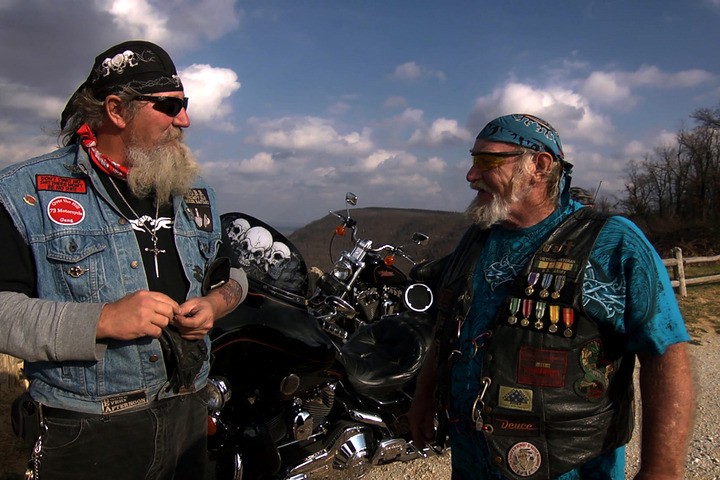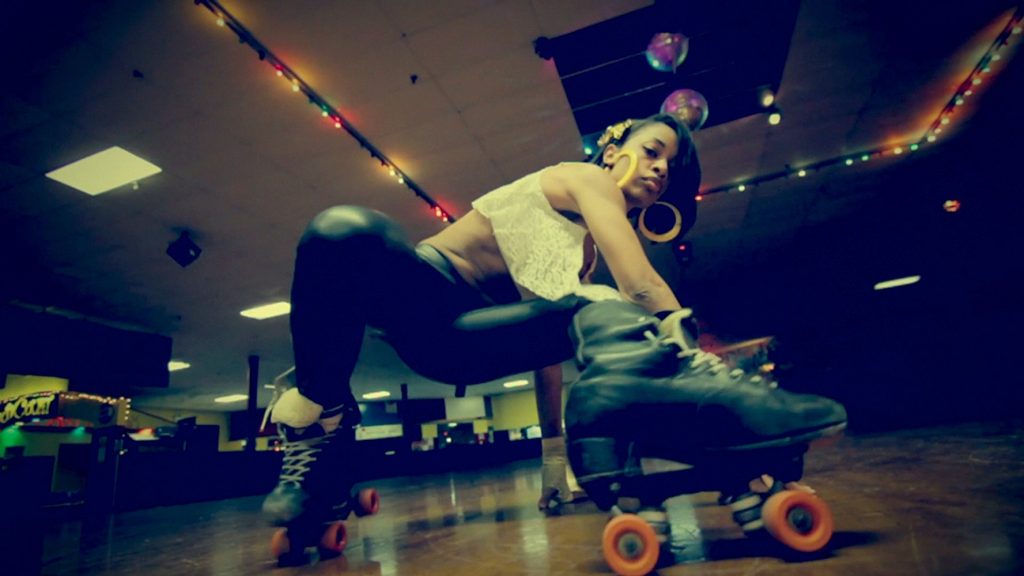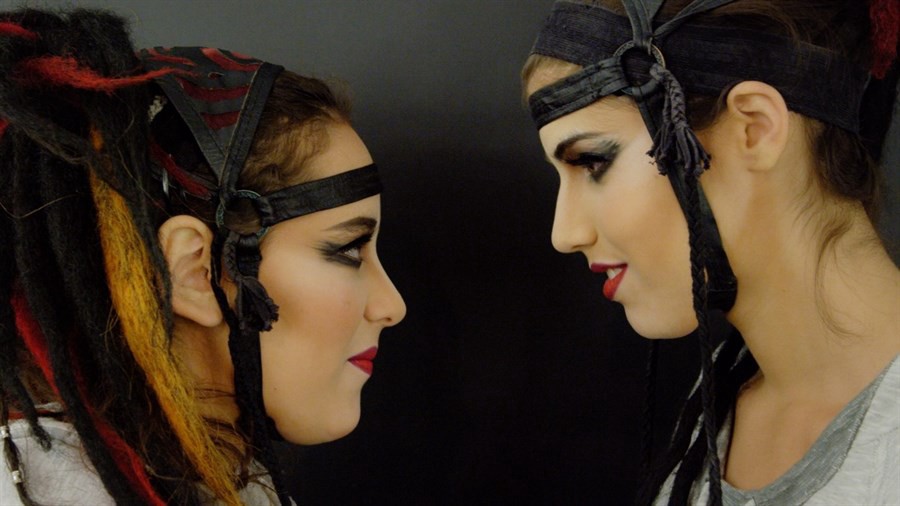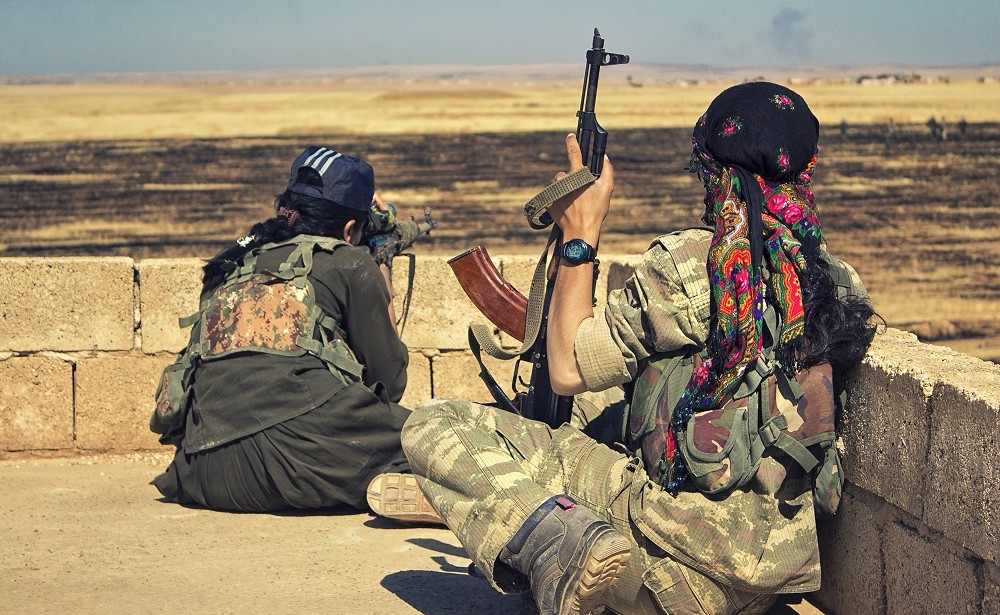Debra Granik is the director of Winter’s Bone, the 2010 drug drama set in the Ozarks that received four Oscar nominations for Best Picture, Best Adapted Screenplay (by Granik and Anne Rosellini), Best Actress (Jennifer Lawrence), and Best Supporting Actor (John Hawkes). Her first feature was 2004’s Down to the Bone, a portrait of addiction starring Vera Farmiga.
Granik’s highly anticipated follow-up to Winter’s Bone is the documentary Stray Dog, which will play at the Los Angeles Film Festival on June 13.
W&H: Please give us your description of the film.
DG: Stray Dog is the story of Ron “Stray Dog” Hall, a Vietnam veteran who lives in southern Missouri. At first glance, this burly, bearded biker looks like one badass dude. But Ron channels much of his post-combat need for high-adrenalien experiences into helping others: fellow veterans, their families, his own family, neighbors and strays along the way. His remaining restless impulses, he tries to work out on his Harley, which he refers to as his “shrink.” The movie follows Stray Dog as he rides cross-country to Washington, DC, with his fellow vets to pay tribute to their fallen brothers at the Vietnam Memorial. Back home, Ron and his Mexican wife, Alicia, assist her two newly arrived teenage sons, who are, like Stray Dog, striving to find their place in a country that has become foreign.
W&H: What drew you to this story?
DG: We met Stray Dog while working on our last film, Winter’s Bone. After the film wrapped, we went to visit him at the RV park where he lives and works. Meeting him in his own element, Stray Dog introduced us to aspects of his world — to biker culture, what comprises his Vietnam Vet identity, and his day-to-day MO for survival. We decided to do a documentary portrait of Stray Dog largelybecause of his willingness to wrestle down the raw and rogue parts of himself and to engage us in a dialogue about what he’s lived through and thought about. Through his perspective, we tried to stitch together some pieces of the American warrior experience as seen from within and outside of it.
W&H: What was the biggest challenge in making the film?
DG: Documentary filmmaking is a humbling process. Daily life can’t be scheduled and bossed around. You can’t capture everything that you want. Shooting and editing a documentary film is often a wayward and confounding journey of finding the narrative in a teeming mass of available material.
The biggest obstacles with filming outside your own social class, race or gender will be just that — crossing into those chasms of difference. One will always need a ferryman to bring you across. Once you find that person, you can slowly enter an arena you may not know. You can be told of the ways, shown the customs, try to hear of the beliefs, the fears, the protocols. You get cross-pollinated. You leave feeling more than when you arrived, tuned-in in some degree to another’s existence.
But even with your guide, there are places you can’t go. Places where people let you know you are not welcome. There’s no glory in filming people who don’t want to be filmed. In some instances there’s no way to talk yourself out of being lumped together with the news media or triggering people’s fears of being misrepresented. I have to concede that frequently it’s hard for me to accept NO.
W&H: What advice do you have for other female directors?
DG: Work on thickening the skin. Easier to say than do, of course. I’ve had to learn to evaluate the feedback I get on work to decide which suggestions I want to consider, and which I have to push aside in order to retain my own taste, vision, and gut sense about things. Surround yourself with a group of collaborators with whom you enjoy discovering ideas and making work.
W&H: What’s the biggest misconception about you and your work?
DG: None in particular — people seem to understand my work for the most part. People have asked, “Will you always have drugs in your films?” as if that’s a pre-requisite or a dogma I have. Maybe people think I’m only attracted to somber subjects — not so!
W&H: Name your favorite women directed film and why.
DG: I’m inspired by and greatly admire the director Kira Muratova. She’s directed a lot of films. She seems to really follow her own sensibility and break out of the pressures around her, and she survived some serious pressures throughout the decades. The two films I know of hers are Long Goodbyes and The Asthenic Syndrome. It’s hard to pick a single favorite because in reality, inspiration comes at you from an array of sources. With each film my contemporaries make, the filmmaking world grows. Their tenacity, when they keep going, come hell or high water, urges me on.







